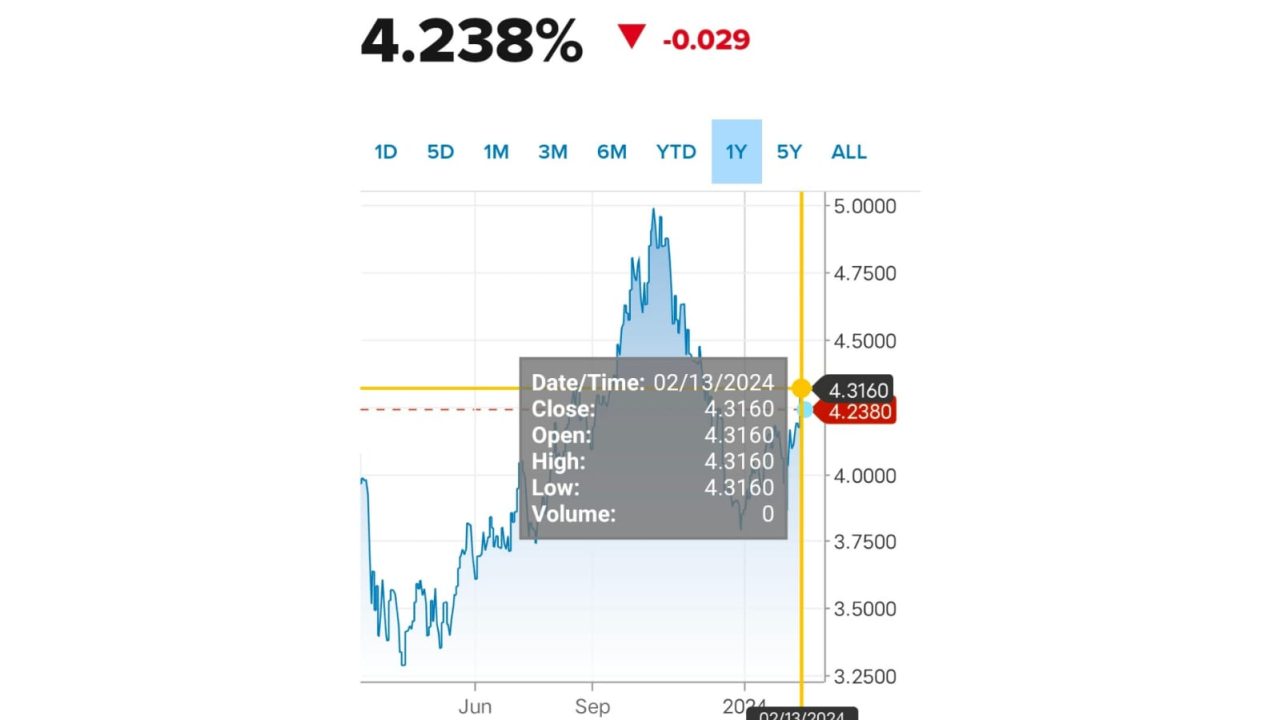U.S. Treasury yields relaxed on Wednesday as investors analyzed the most recent inflation data and pondered its implications for interest rates.
The yield on the 10-year Treasury remained almost 2 basis points lower at 4.3% after surging by as many as 15 basis points on Tuesday.
The 2-year Treasury rate decreased by approximately 3 basis points to 4.62%. On Tuesday, it climbed by as much as 19 basis points.

Treasury prices surged on Tuesday following a hotter-than-expected January consumer price index reading.
In January, prices rose by 0.3% from December and by 3.1% annually. Economists previously surveyed by Dow Jones had anticipated increases of 0.2% and 2.9%, respectively.
This data reignited concerns that interest rate reductions might be delayed and that there could be fewer cuts than initially anticipated this year.
The U.S. Federal Reserve officials have recently emphasized their reliance on economic data to gain confidence that inflation is returning to the 2% target range before deliberating on rate adjustments.

According to CME Group’s FedWatch tool, traders were recently estimating only an 8.5% probability of a March rate cut, down significantly from about 80% just a few weeks ago.
This shift towards the expectation of sustained higher rates has reignited worries that elevated interest rates might precipitate an economic downturn—a concern that has lingered among investors since the Federal Reserve commenced its rate-hiking cycle in early 2022.
Investors are currently turning their attention to forthcoming statements from Fed officials and data releases over the week to glean insights into the rate trajectory and the economic landscape.


